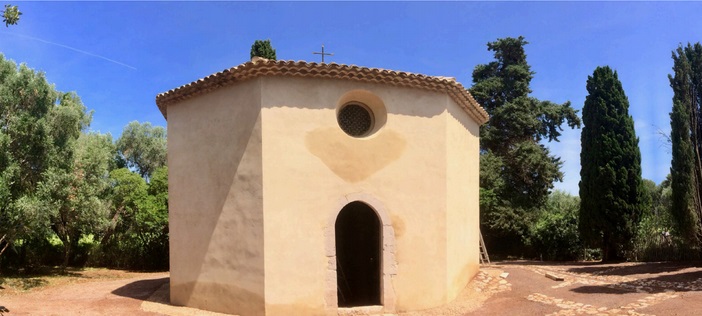The inauguration of the restoration work on the Saint-Sauveur chapel took place yesterday in the presence of religious and civil authorities.
This occasion provides an opportunity to look back at the history of this natural jewel: the Saint-Sauveur chapel, one of the seven chapels on the island, built in the 11th century, has been the subject of successive archaeological excavations. These have confirmed the existence of earlier buildings, the oldest dating from the 5th century, making this site one of the oldest monastic sites in Europe!
To save this exceptional heritage and pass it on to future generations, the Congregation of the Cistercians of the Immaculate Conception, owner of the island, partnered with the French Heritage Foundation in 2014. The goal was to launch a fundraising campaign to restore the Saint-Sauveur chapel.
Thus, after emergency and foundational work, the chapel has been fully restored, ensuring the preservation of the building in its current architectural state, as well as the preservation of archaeological remains.
Between land and sea, the island of Saint-Honorat tells 1600 years of history through its heritage.
In the early 5th century, with Caprais and a few companions, Saint-Honorat founded a monastic community on the island that gradually expanded and flourished.
At the end of the 10th century, after a troubled period due to invasions by the Saracens and Spanish and Genoese pirates, the abbey was revived with the Benedictine order. During this unstable period, the fortified monastery was built, a colossus facing the sea. The first Cistercian monks from the Abbey of Sénanque arrived on the island in 1869.
Today, visitors can discover on this classified site a monumental ensemble composed of a 19th-century abbey, an 11th-century fortified monastery, and seven chapels.


